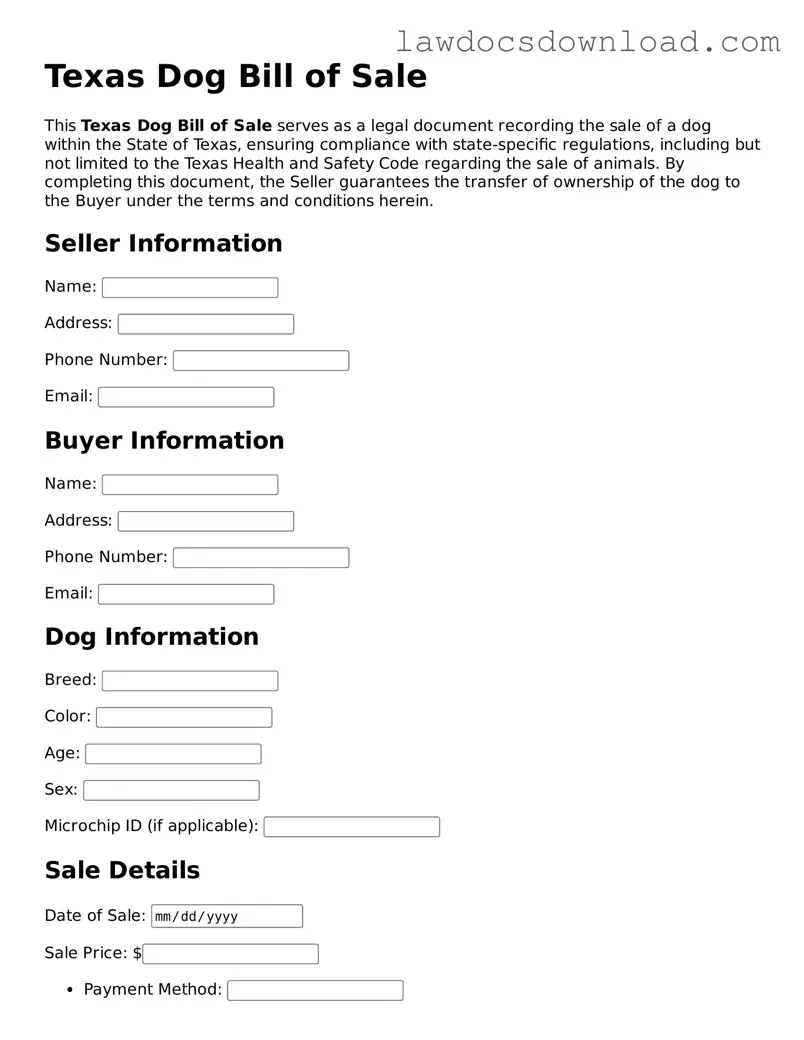The Texas Dog Bill of Sale is similar to a general Bill of Sale, which is used when buying or selling personal property, such as vehicles or electronics. Both documents serve as a legal record of the transaction, detailing the item sold, the price, and the parties involved. They assure the buyer receives rightful ownership while providing the seller with a release from future liability related to the sold item.
Another document closely related to the Dog Bill of Sale is the Pet Adoption Agreement. This document is specifically tailored for the adoption of pets, detailing the terms and conditions under which the pet is adopted. It often includes clauses about the pet's welfare, the new owner's responsibilities, and sometimes, a return policy if the adoption does not work out. Similar to the Dog Bill of Sale, it ensures the pet's welfare is considered and that the transfer of responsibility is clear and legally binding.
The Livestock Bill of Sale is also akin to the Dog Bill of Sale, focusing on the sale of animals such as cattle, horses, and sheep. Although the specifics of the animals differ, the essence of the document is the same: to record the sale, include details about the animal(s) sold, and protect both buyer and seller legally. This document, like the Dog Bill of Sale, aims to formalize the transaction and provide a clear chain of ownership.
Equally, the Warranty Deed is another document resembling the Dog Bill of Sale. While typically used in real estate transactions to transfer property ownership, its core function of guaranteeing the buyer's new ownership status and the seller's right to sell the property is shared. Both documents ensure that the seller has clear authority to sell the item in question, and they offer protection to the buyer against future claims on the item or property.
The Psychological Evaluation Form, although different in application, shares parallels with the Texas Dog Bill of Sale in terms of the protection and welfare considerations for the subject involved. Where the Evaluation Form assesses an individual's mental health for their safety and well-being, the Dog Bill of Sale includes stipulations aimed at ensuring the animal's welfare is guarded post-transaction. Both documents hold parties accountable for the subject's welfare moving forward.
Lastly, the Transfer of Ownership document, commonly used in business for assets or shares, mirrors the Dog Bill of Sale's functionality in property transfer. It involves the formal transition of ownership rights from one party to another, ensuring all legal requirements are met and both parties agree to the terms. Though the items or entities being transferred vary, the principle of legally binding transfer and clarity of agreement remains central to both documents.
